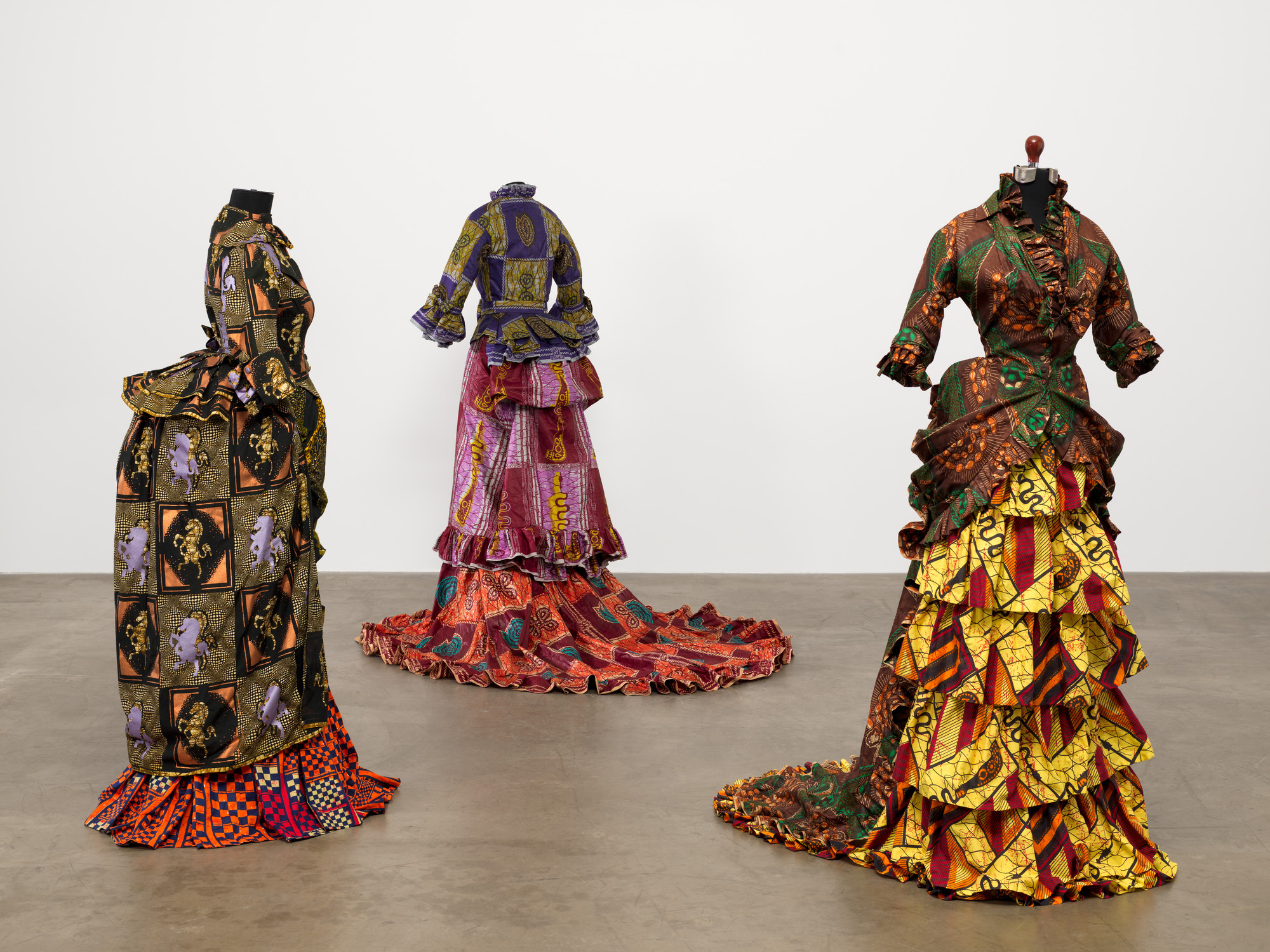Teach about Black Artists: Yinka Shonibare Black History Art Lesson

Shonibare’s artwork explores contemporary African identity and its relationship to European colonialism through painting, sculpture, installation, and moving image. Shonibare is best known for his work with visual symbols, especially the richly patterned Dutch wax fabric produced in Europe for a West African market that he uses in a wide range of applications. His tableaux of headless mannequins costumed in this fabric evoke themes of history and its legacy for future generations. Through these works he explores the complex web of interactions, both economic and racial, that reveal inequalities between the dominant and colonized cultures of Europe, Asia, and Africa.
SOURCE: CLICK HERE

The British-Nigerian artist Yinka Shonibare makes work – often in sculpture, painting and tapestry – that looks unflinchingly at race, class and colonialism. The 58-year-old, who is partly paralysed after contracting a virus of the spine in his late teens, was one of the original YBAs and was shortlisted for the Turner prize in 2004. His 2010 sculpture Nelson’s Ship in a Bottle, a scaled-down replica of HMS Victory with sails made from his signature batik fabric, was one of the most memorable artworks on Trafalgar Square’s fourth plinth and now has a permanent home outside the Maritime Museum in Greenwich. Shonibare was recently given the 2021 Art Icon award by the Whitechapel Gallery.
SOURCE: CLICK HERE

These Western–style nineteenth–century costumes, worn by mannequins as if part of a historical display, are made from so-called African fabrics. "African fabric signifies African identity," explains the artist, "rather like American jeans (Levi's) are an indicator of trendy youth culture. In Brixton, African fabric is worn with pride amongst radical or cool youth [....] It becomes an aesthetics of defiance, an aesthetics of reassurance, a way of holding on to one's identity in a culture presumed foreign or different."
Although typically African and worn as an expression of an idealized unified identity, these wax–print fabrics are actually Dutch and were made in factories in England, where Yinka Shonibare, who was brought up in Nigeria, now lives and works. Originally made in Holland with an Indonesian technique, and exported to Africa, such fabrics bespeak colonial trade. The title is taken from a line in Alfred Hitchock's 1959 film North by Northwest, and like the cultural conflation of the work, poses a question about identity and becoming.
SOURCE: CLICK HERE


CLICK HERE TO FIND ART RESOURCES TO TEACH TO YOUR COMMUNITY: TEACH ABOUT BLACK ARTISTS
https://www.teacherspayteachers.com/Product/Black-History-Art-Shonibare-Love-in-War-K-6-Painting-Lesson-Common-Core-5274309
